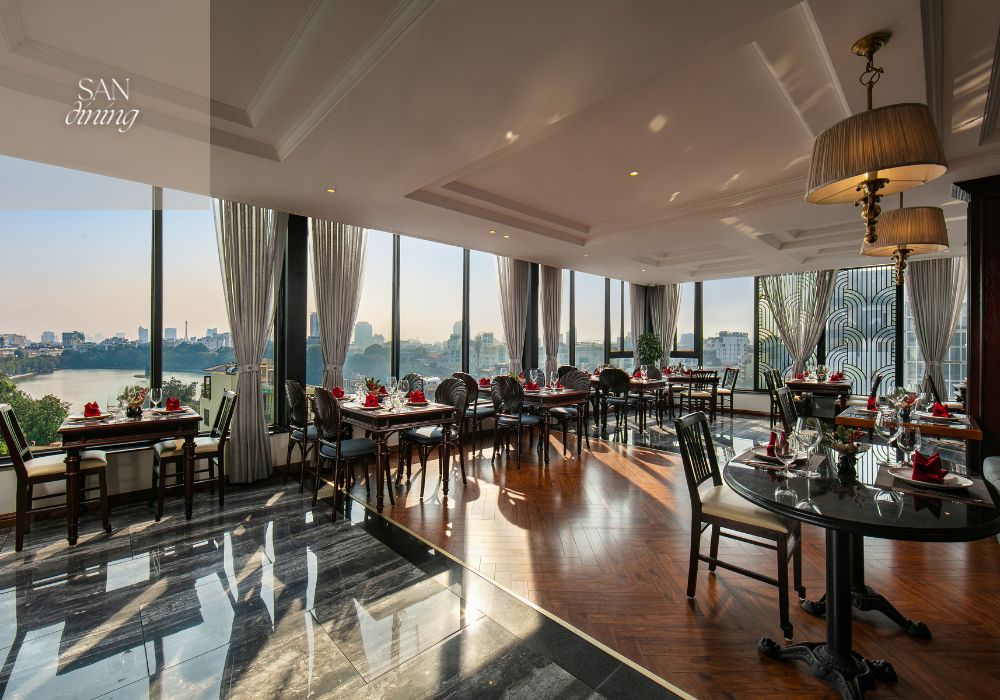Romantic Restaurants Islamabad: Perfect Dining Locations for Pairs
Savor Authentic Eastern Food With a Pan-Asian Spin for a Cooking Journey
Embarking on a cooking journey through genuine Oriental food, boosted with a Pan-Asian spin, uses an one-of-a-kind opportunity to explore the abundant tapestry of flavors that specify the area's varied cooking practices. As you contemplate these luring meals, think about the social stories and historic influences that form them, each bite using a story waiting to be discovered. pan asian dining Islamabad.

Checking Out Pan-Asian Flavors
In the realm of global gastronomy, Pan-Asian cuisine sticks out for its impressive diversity and the harmonious interaction of flavors from different Oriental cultures. This culinary approach celebrates the special active ingredients and abundant practices found across the continent, developing a tapestry of preferences that is both gratifying and fascinating. Trick to Pan-Asian food is its capability to balance different flavors-- pleasant, salty, spicy, and sour-- while highlighting the quality and high quality of each active ingredient.
From the umami-rich soy sauce of Japan to the fiery chili peppers of Thailand, Pan-Asian cuisine supplies a comprehensive palette of tastes. These aspects are typically combined in inventive methods, boosting meals with layers of intricacy. For circumstances, the use of fragrant natural herbs such as lemongrass and cilantro, usual in Vietnamese and Thai cuisine, adds a revitalizing brightness to dishes, while the unification of coconut milk supplies a velvety, rich appearance.
The focus on fresh fruit and vegetables and fragrant spices makes certain that each meal is not just a feast for the taste buds however additionally for the senses. Pan-Asian food invites restaurants to start a cooking journey, exploring the large and differed landscapes of Eastern gastronomy with every bite.
Blend Recipes to Attempt
While Pan-Asian cuisine is commemorated for its standard flavors, the contemporary culinary landscape is significantly embracing blend recipes that blend these timeless elements with influences from various other regions. This innovative approach not only honors the rich heritage of Eastern cookeries yet also presents novel preference experiences that appeal to contemporary tastes buds.
A prime instance of such a fusion dish is the Korean-Mexican taco, where marinated bulgogi beef is covered in a cozy tortilla, topped with kimchi and a hot gochujang-infused salsa. This mix weds the bold, tasty flavors of Korea with the vibrant, fresh aspects of Mexican cuisine. Likewise, sushi burritos have actually gotten popularity, joining together the delicate virtuosity of Japanese sushi with the passionate, hand-held convenience of a burrito, usually including fusion ingredients like tempura shrimp and avocado with a drizzle of wasabi mayo.
An additional noteworthy recipe is Thai curry ramen, which instills the luscious, aromatic spices of Thai curry right into the soothing broth of standard Japanese ramen, creating an unified mix that entices the detects. These blend dishes prolong past plain uniqueness; they represent a cooking dialogue in between societies, encouraging expedition and technology in the globe of Pan-Asian food.
Necessary Active Ingredients and Seasonings
To absolutely appreciate Pan-Asian cuisine, one have to understand the vital active ingredients and flavors that create its structure. This diverse culinary style attracts from a rich tapestry of Oriental practices, employing an unified mix of tastes and structures.
Fragrant components are pivotal, with lemongrass, garlic, and ginger being common across various Pan-Asian recipes. These ingredients give a great smelling base that improves the complexity of flavors. Flavors such as celebrity anise, cardamom, and cinnamon introduce warmth and character, resembling influences from areas like China and India.

Food Preparation Techniques and Tips
Mastering the art of Pan-Asian cuisine requires experience Recommended Site with its distinct cooking strategies, each adding to the lively tapestry of flavors this culinary tradition is commemorated for. Central to these approaches is the stir-fry, a quick food preparation method that maintains the dietary integrity and dazzling shades of components. Utilizing a frying pan, the stir-fry method permits even warm distribution, essential for attaining the particular texture and taste balance of Pan-Asian recipes.
Another essential strategy is steaming, especially prevalent in Chinese cuisine. This mild technique preserves the natural flavors and nutrients of active ingredients, making it perfect for seafood and veggies. Dumplings, a cherished staple, typically gain from steaming, causing soft, delicious structures.
Grilling, also essential, imparts great smoky depths to dishes such as Korean bulgogi or Japanese yakitori (pan asian restaurant Islamabad). This method often includes seasoning components, permitting tastes to pass through deeply before cooking over an open flame or hot plate
Lastly, mastering the art of stabilizing flavors-- sweet, sour, salty, bitter, and umami-- is essential. Effectively layering these elements can elevate a recipe from regular to phenomenal, providing a complex and satisfying cooking experience that symbolizes the essence of Pan-Asian food.
Eating Experiences Worldwide
Across the world, Pan-Asian food supplies an exceptional dining experience, celebrated for its abundant tapestry of tastes and vivid presentations. This cooking phenomenon has actually gone beyond cultural limits, recording the hearts and palates of food lovers worldwide. In worldwide cities like New York, London, and Sydney, Pan-Asian dining establishments function as melting pots where cooking customs from Thailand, Japan, China, and beyond assemble, giving restaurants with an eclectic mix of meals that highlight the region's variety.
The international appeal of Pan-Asian food exists in its capacity to offer both credibility and advancement. Chefs skillfully wed conventional ingredients such as lemongrass, soy sauce, and miso with modern methods, resulting in meals that are both refreshingly new Continue and familiar. This blend permits restaurants to start a culinary journey that respects heritage while welcoming modernity.
Moreover, dining experiences are elevated with thoughtfully made atmospheres that mirror the principles of Pan-Asian looks. From minimalist Japanese-inspired interiors to lively Thai-themed areas, each restaurant offers a special ambiance that complements the culinary offerings. Therefore, patrons are not simply eating a dish but partaking in a social experience, making Pan-Asian dining a genuinely international sensation.
Conclusion
The exploration of Pan-Asian cuisine uses an extensive understanding of the detailed interaction of tastes and cooking practices across Asia. By accepting fusion meals such as Thai curry ramen and sushi burritos, the cooking journey not only highlights the flexibility of traditional components yet also showcases ingenious modern strategies. This gastronomic adventure, enhanced by cooking methods and necessary spices, provides a distinct chance to appreciate the social variety and cooking creativity that specify Pan-Asian cuisine on a worldwide range.
Embarking on a culinary trip via authentic Asian food, improved with a Pan-Asian spin, offers a distinct possibility to explore the abundant tapestry of tastes that define the area's diverse cooking practices.In the world of international gastronomy, Pan-Asian food stands out for its impressive variety and the unified interplay of tastes from various Oriental societies. Trick to Pan-Asian food is its ability to balance different flavors-- pleasant, salty, spicy, and sour-- while highlighting lunch specials near me the freshness and high quality of each component.
